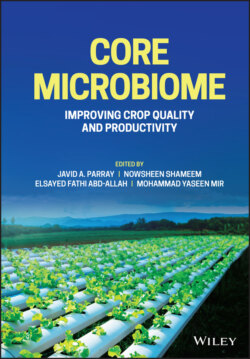Читать книгу Core Microbiome - Группа авторов - Страница 29
2.3.2.3 Antagonism
ОглавлениеEndophytes and phytopathogens live in a similar niche; they release a range of bioactive compounds to suppress or impede pathogens’ average growth and activity. Production of antibiotics, metabolites with antifungal properties, and production of volatile compounds such as hydrogen cyanide (HCN) by endophytes are directed mainly toward inhibiting plant pathogens [60]. Several compounds with antimicrobial properties have been purified and identified from endophytes, including peptides, terpenoids, steroids, alkaloids, phenols, quinones, flavonoids, and polyketides [61]. When different microbial species are near each other, endophytes or the host plants obstruct the growth of invading microbes, which is evident from the secretion of bioactive metabolites [62]. Phomopsis cassia, an endophyte from Cassia spectabilis, synthesized compounds similar to cadinene sesquiterpenes and 3,11,12-trihydroxycadalene, which showed activity against fungi like Cladosporium cladsporioides and C. sphaerospermum [63]. Similarly, the antagonistic potential of five endophytic Bacillus sp. isolated from Solanum sp. was screened against Fusarium oxysporum.
It was reported that the endophyte was capable of limiting pathogen sporulation and mycelial growth by the production of extracellular metabolites such as chitinases and lipopeptide antibiotics [64]. Effective inhibition of phytopathogenic nematodes [65,66], oomycetes, and fungi [67–71] by bacterial species have been reported through the production of VOCs. Thus, VOCs have been shown to have enormous potential in biocontrol.
